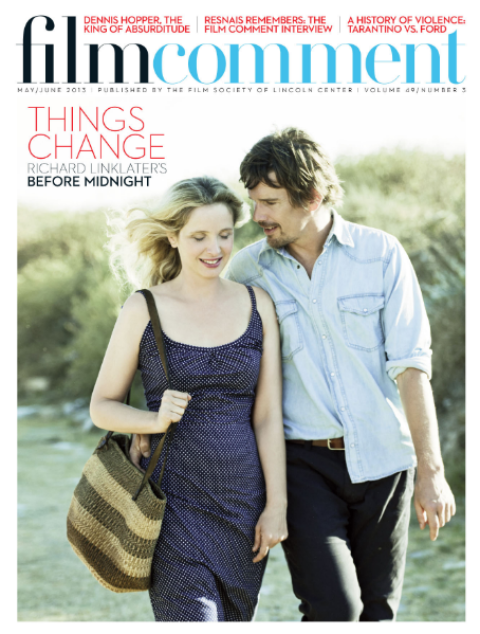
A young woman sleeps in an apartment. A young man gets dressed and leaves without saying goodbye. He steps into the city street, very much the picture of what the well-dressed ambitious young businessman is wearing. Were it not for the distancing effect of the black-and-white cinematography, this might be the opening of a new romantic comedy. In fact the woman is Beatrice, the man is Benedick, and this wordless prelude provides interpolated backstory for Joss Whedon’s adaptation of Much Ado About Nothing. The invention of a prior hookup for the couple—“too wise to woo peaceably”—who will spend much of the rest of the play engaged in a “merry war” balancing attraction and repulsion is in fact perfectly consonant with Beatrice’s statement, in their first scene together, that “I know you of old.”
Shot in less than two weeks at his home in Santa Monica, Whedon’s film is an unlooked-for pleasure. The inevitable comparison is with Kenneth Branagh’s 1993 version, a movie often highly entertaining but looking at times like a cross between a Renaissance fair and an on-location commercial for Tuscan wine, and with its air of robust joviality seeming almost desperate to solicit the audience’s amusement and goodwill. Branagh’s film is full of good performances that don’t quite connect with one another, whereas here what is notable is the coherence of the ensemble.
Whedon doesn’t build up atmosphere to prepare the audience for the exoticism of Shakespearean language. There is no attempt to “sell” the text—the play merely unfolds as if it were the most natural thing in the world for a bunch of well-heeled Californians, corporate honchos, and their associates (from the looks of them) to express themselves matter-of-factly in Elizabethan English. It is the most American Shakespeare movie I’ve seen. The cast is drawn largely from television, many of them veterans of Whedon productions such as Buffy the Vampire Slayer, Angel, Firefly, and Dollhouse, and their line readings are crisp and TV-naturalistic. That most of the play is in prose certainly helps sustain the illusion that these contemporaries find it natural to express themselves in such pointed, stylized, performative language: it seems entirely of a piece with their exquisitely tailored clothes, power ties, up-to-the-minute digital devices, and presumably well-chosen wines.
In Whedon’s hands the play becomes a romance of the one percent, set against backgrounds that look like photo spreads in GQ or Architecture Today. The masquerade during which Don Pedro woos Hero for Claudio becomes an upscale all-night lawn party, complete with acrobatic entertainment out of Cirque du Soleil, and Claudio’s subsequent recriminations take place in the context of a hung-over session in the kitchen the next morning. The luxury here does not have an aura of magic or poetic magnificence; it is merely casually moneyed, the relaxed domestic setting appropriate to a modern-day Governor of Messina or Don Pedro of Aragon. The police station where Dogberry and his fellow incompetent watchmen hang out is, by contrast, a picture of low-budget municipal furniture and obsolete desktop PCs.
The central “gulling scenes,” in which Benedick and Beatrice are each in turn made to believe that the other is in love with them, are played broadly in what looks almost like an homage to Blake Edwards, with much rolling and backward tumbling. But it is the dark side of Much Ado—everything associated with the smearing of Hero’s reputation and her lover Claudio’s savage rejection of her—that emerges most forcefully here. The modern trappings curiously erase the distance between 16th-century male sexual attitudes and today’s, with Claudio’s sudden misogynistic frenzy seeming like the erupting discontent of the Maxim-style laddishness that hovers in the air. Throughout, Whedon’s precise reading makes the play, once again, a new thing.








